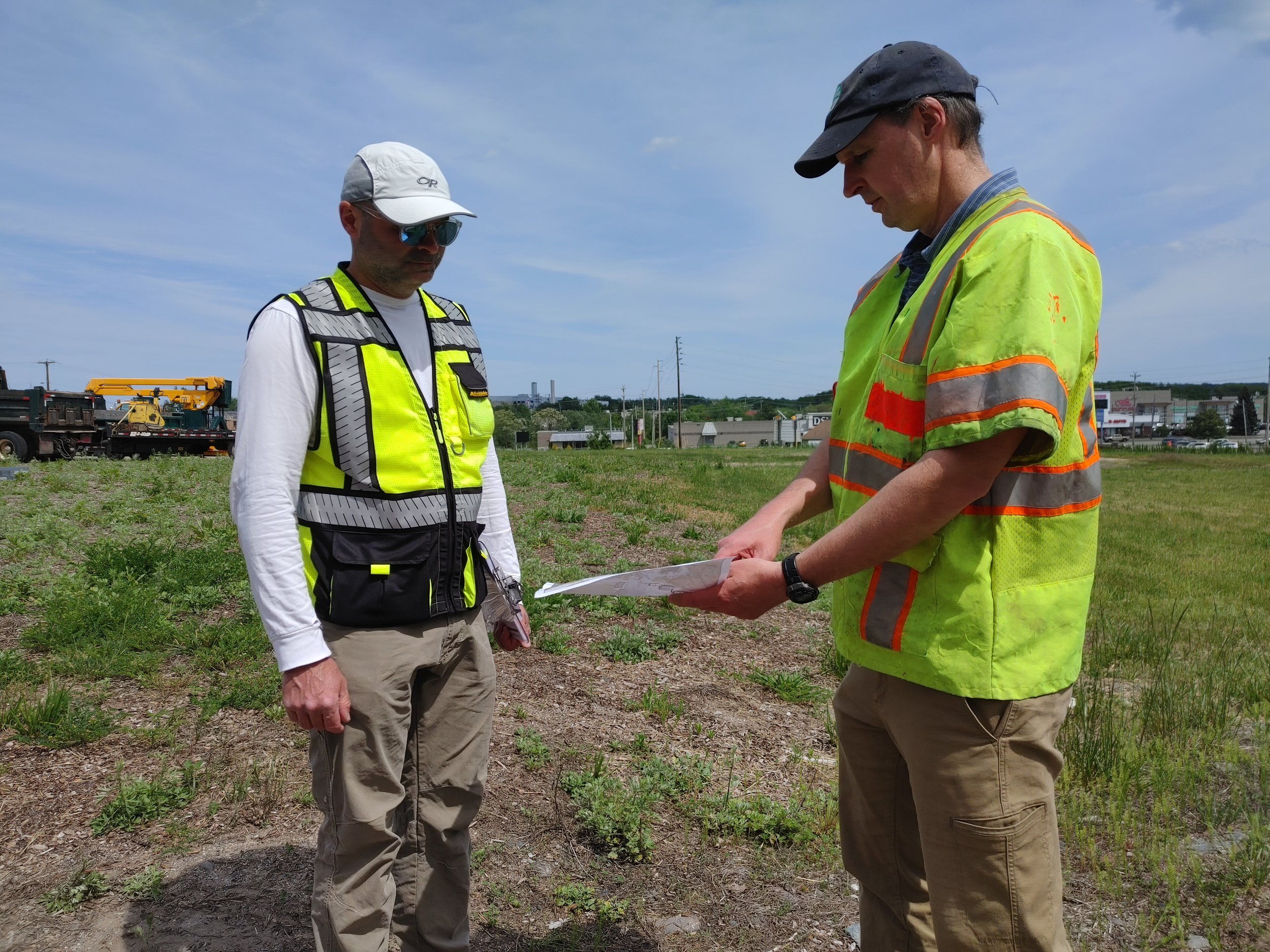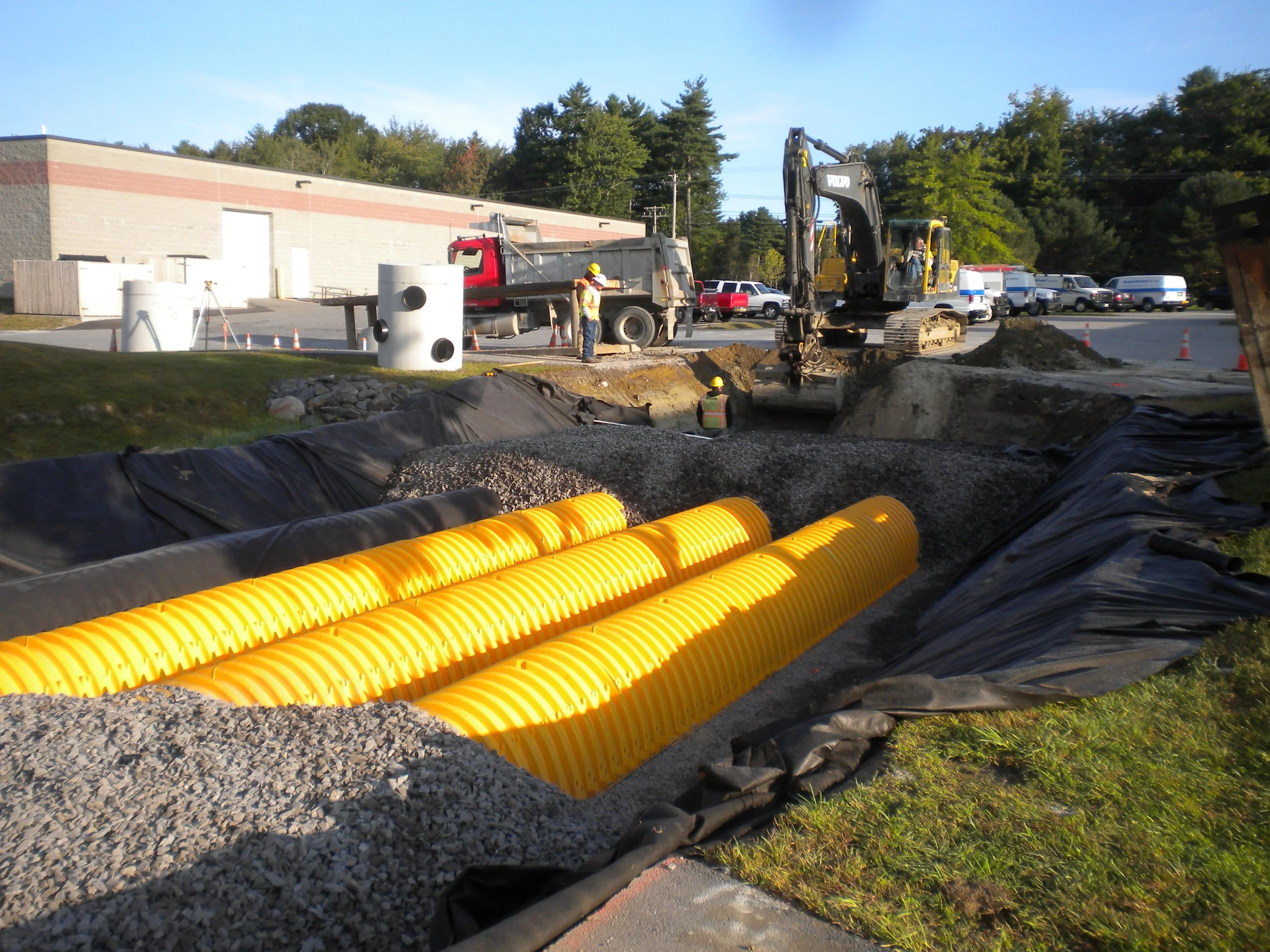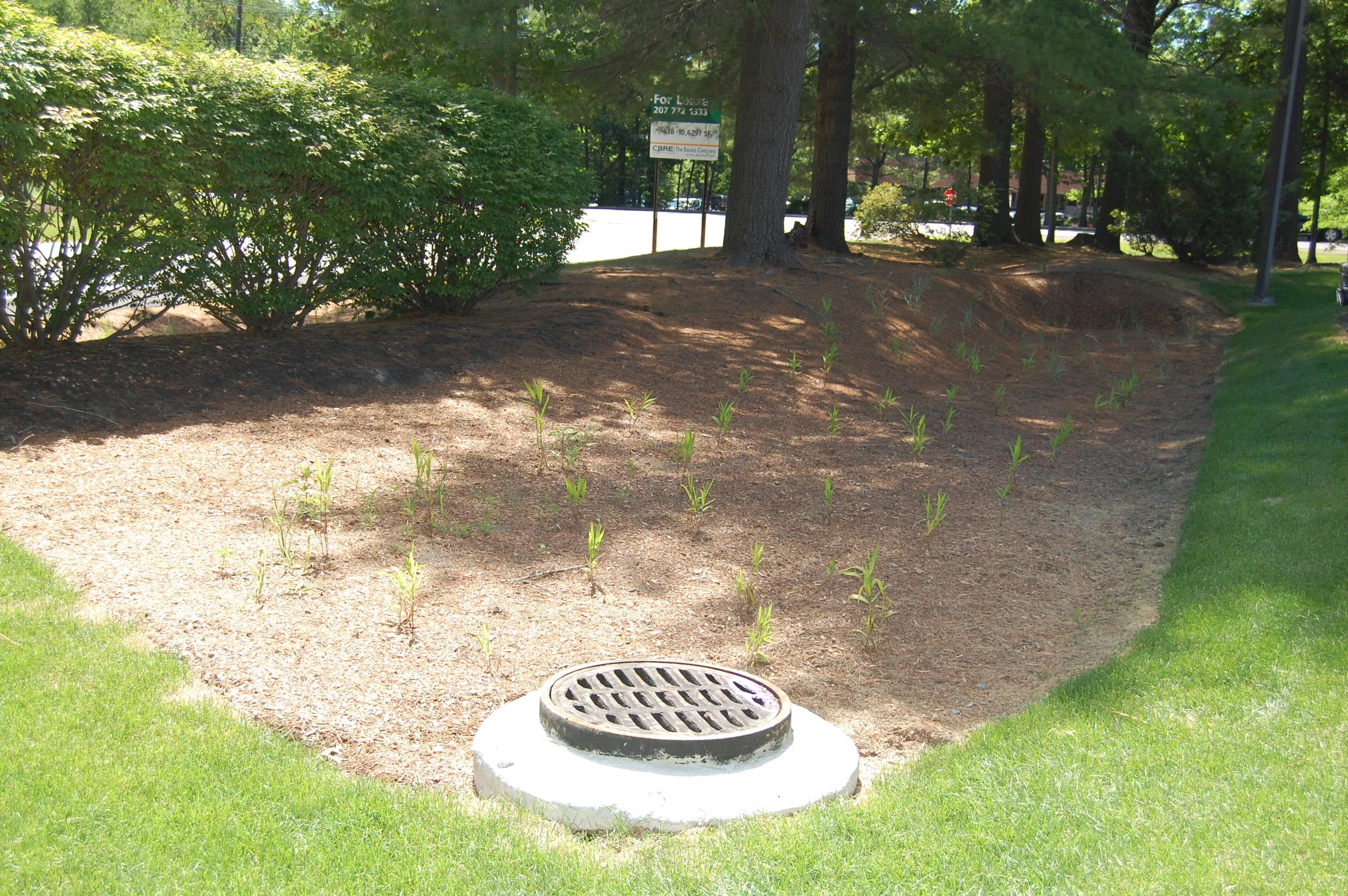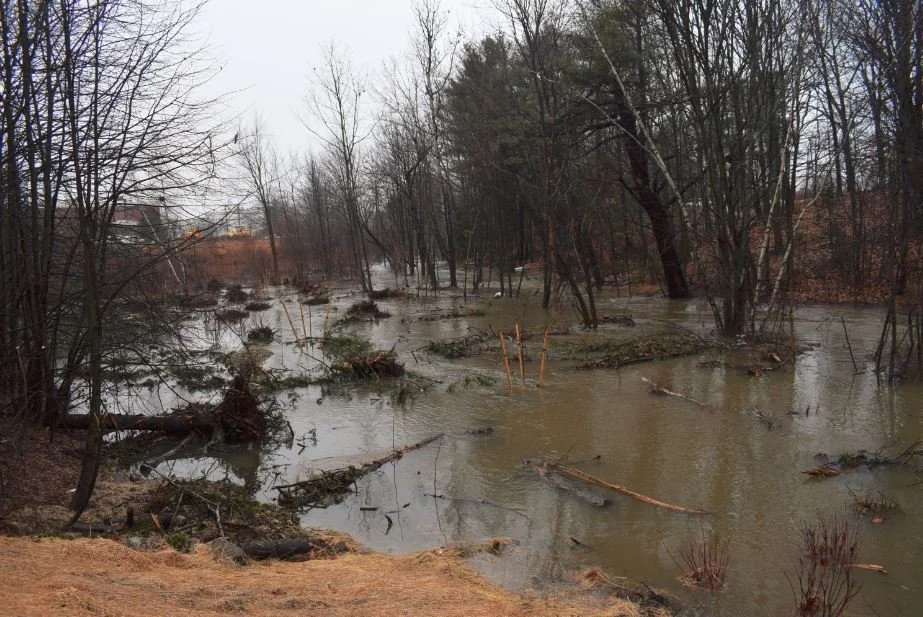Construction Projects
Main Stem Restoration Project
Long Creek is impacted by extensive development in the watershed, resulting in poor water quality and habitat for wildlife. This project included improving the stream bed, stabilizing the stream banks, managing invasive plants, establishing native plants, and reestablishing the stream’s floodplain to predevelopment conditions.
Good Housekeeping
-

Parcel Inspections
Parcel inspections are performed between April and October each year to review stormwater infrastructure and good housekeeping and we recommend Participating Landowners or their property managers accompany us to discuss site-specific operation and maintenance plans and to resolve issues identified during inspections.
-
Pavement Sweeping
Road and parking lot pavement sweeping happens multiple times throughout the year to remove litter, sand, metals, leaves, and other pollutants. Sweeping events occur between April and November each year.
-

Catch Basin Cleaning
Approximately 700 catch basins are inspected and cleaned between June 1 and October 31 each year on Participating Landowner parcels.
-
Winter Maintenance
Long Creek chloride levels are too high to support important stream wildlife due to road salt applications on roads, parking lots, and sidewalks during winter months. The only known effective way to lower chloride levels is through reducing the use of road salt. The District is implementing a salt reduction program for Participating Landowner winter maintenance contractors.
Watershed Monitoring
-

Continuous Monitoring
Water quality data is collected continuously with data loggers deployed at various locations along Long Creek. Parameters monitored include temperature, specific conductance, and dissolved oxygen.
-

Grab Sample Collection
Grab sampling water quality monitoring data is collected annually. Monitoring includes determining the levels of metals, hardness, chloride, phosphorus, dissolved oxygen, and temperature.
-

Flow Monitoring
Due to the high impervious cover in the watershed, the stream’s flow rates increase rapidly and intensively during storms. This causes stream bed and bank erosion and deposits sediment on important spawning habitat for brook trout and disrupting habitat for bugs.
-
Biomonitoring
Aquatic bug monitoring is performed in accordance with MDEP Biological Monitoring Program protocols.
-

Fish Monitoring
Fish monitoring is performed at all primary monitoring locations in accordance with MDEP Biological Monitoring Program Electro-Shock protocols.
-

Weather Data
Weather data is compiled annually from the National Oceanic and Atmospheric Administration (“NOAA”) weather station located at the Portland International Jetport.

















